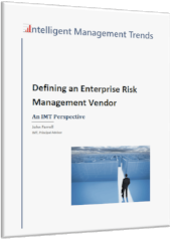If you sell innovative technology or consider yourself a lead user, you are probably familiar with various technology adoption lifecycle theories such as Moore’s Crossing the Chasm, the Technology Acceptance Model, and Rogers’ Diffusion of Innovations. While these models help explain the shape of adoption curves, they usually stop short of explaining growth rates and time horizons for adoption cycles. Considering user risk factors is one way to enhance the predictive capabilities of emerging technology acceptance forecasting models.
The popular theoretical adoption models generally incorporate product value communication and emotional connection for a variety of user personalities to explain how individual purchasers eventually turn into a mass market. This is fine for analyzing the market potential and target segments for iPhones, 3D television, and other personal technologies when personal risks are limited, but the risk dynamics for enterprise adoption are a significant determinant of the pace for business technology investments.
Consider the example of cloud computing. The topic gets a lot of press today as a recent technology trend when the concept was actually first articulated in the 1950s and 60s. The technical hurdles for supplying computing resources over a public cloud were solved more than a decade ago, and the cost benefits of the new pricing models have been proven for years. So why have we not seen a wholesale adoption of cloud computing?
Sunk investments in existing corporate IT infrastructures partially explain the reluctance to shift computing models, but the more significant explanation is the need to ensure proper management of the business risks associated with cloud computing.
Security, information vulnerability, availability, and long-term sustainability are some of the risks to consider for cloud adoption, but broader corporate liabilities come into play as well. As a former IDC colleague would reply to those asking early in the last decade about the greatest challenges to overcome for cloud computing implementation, “Think about how you are going to handle the long line of lawyers knocking at your door whenever an outage takes place.” It will take many years to shift from today’s use of less risk exposed on-premise and private cloud networks to the broad acceptance of public clouds.
The greater the uncertainties and unknown risks associated with innovative technologies, the longer the adoption cycle will stretch. For nanotechnology and new medical devices, public concerns pressure regulators to struggle to keep up with technology advances. Technology risks, information risks, financial risks, litigation risks, and regulatory risks all add to the considerations for business technology acceptance and investment decisions.
Thoughts on a few other emerging technologies:
- My father-in-law recently asked me about the validity of the Motley Fool’s "can’t miss" analysis of the potential of a company serving the emerging Near Field Communication (NFC) technology market. They provide compelling arguments for the decline of credit card purchasing in favor of broad-based use of mobile NFC-enabled devices. My response: Yes, it will happen, but what is the adoption time horizon? Beyond encryption strength and cybercrime technology risks for NFC users, liability risk responsibilities and fee structures must be established among the multiple layers of payment processing vendors, gateways, and technology providers. It took decades to work out the current model for fee structures and liability risks for credit card purchasing. The timeline will be shorter for NFC, but unaddressed risks will stifle the hype and lengthen its adoption cycle.
- At the other end of the generational spectrum, my daughter recounted a recent class discussion following the classic assignment of envisioning our lives in the future. The predominant view? Technology-enabled thought communication. With thought-driven technology already emerging, communication capabilities will not be too far behind. Given today’s high-profile foibles and gaffes of individuals using social media, imagine the reputation risks that lie ahead with thought communication.
For technology innovators looking to develop a market by enticing potential users with coolness factors, efficiency benefits, or ROI, increase the technology adoption rates for your products by also considering your customers' risk tolerance. Help them, and especially their risk managers, identify any emerging risks associated with your offering and support any risk assessments they must undertake in their investment decision making process.







